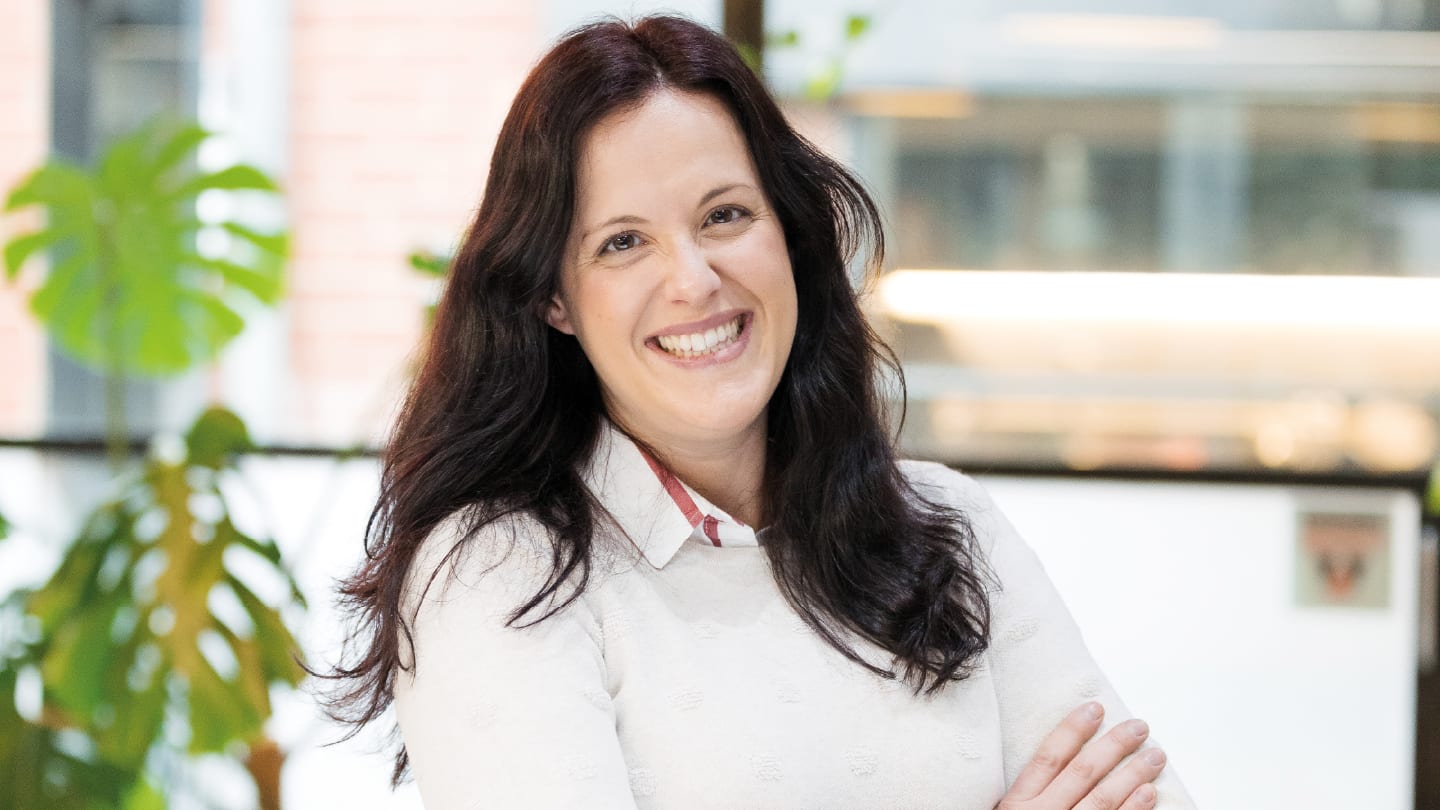
4 – Aurora Series Capillary Flow Column Range
Capillary flow columns combining proteomic depth with long-term stability
Produced by IonOpticks
The 150 μm Aurora Series Capillary Flow Column Range aims to resolve the long-standing trade-off between sensitivity and robustness in proteomics. These columns deliver strong separation performance and wide dynamic range while maintaining consistent stability over extended use. Designed for capillary flow LC-MS workflows, they provide comprehensive proteome coverage with reliable performance, supporting high-throughput and long-term studies in drug discovery, clinical proteomics, and bioprocessing.
What the judges say…
“Industry-leading integrated capillary column electrospray cartridge.”
“Addresses the key trade-off between performance and robustness.”
Insights from the Aurora Series team
Please introduce yourself and your role?
Briedyte: I’m Greta Briedyte, an R&D scientist at IonOpticks, where I work closely with our Product Development team to bring new ideas from the lab bench all the way to market. Our team focus on developing new technologies, refining them through testing and validation, and then helping transfer them into full-scale production
Almeida: My name is Andreia Almeida and I'm a Senior R&D Scientist at IonOpticks. Over the last 5 years, I was given the opportunity to work in our innovative product pipelines, production improvements, and transfer to manufacturing. As a key player in the Product Development team, I work closely with the team to deliver high performance products that address customer needs. This is mostly done by being bold and passionate about strategic planning and bringing innovative solutions to market.
For the expanded Aurora Series® Capillary Flow Column Range, Greta improved the emitter design, after which I took on the work of packing the columns to consistently deliver high performance, managing quality control, and the transfer to production.

What inspired or sparked the idea behind this innovation?
Briedyte: The idea came directly from researchers. At conferences, we heard the same requests over and over: people asking for tools that don't force them to choose. They wanted to handle complex samples in clinical proteomics and drug discovery without sacrificing protein coverage for speed. At the time, microflow columns gave you throughput but limited depth, while nanoflow offered comprehensive coverage but slow analysis. There was a clear gap in the middle, and researchers were essentially telling us they needed it.
Almeida: Another layer was durability and flexibility. Researchers wanted columns that could reliably run different workflows without degrading. They wanted one platform they could trust, rather than managing multiple systems. So we set out to build something that didn't ask researchers to compromise - something robust enough to handle the demands of clinical work while flexible enough to adapt to how different teams actually work.
What was the biggest hurdle you faced during development and how did you overcome it?
Almeida: Timing was brutal. We were launching an expanded Aurora Series® Capillary Flow Column Range alongside a complete Generation 4 upgrade to our entire column range, all while relocating our HQ and learning new workflows. The new capillary flow columns themselves required simultaneous breakthroughs on two fronts: completely reimagining the emitter while ensuring the rest of the column met the elevated standards of Generation 4. It got pretty overwhelming at times.
What made it work, and whom I really want to shout out, is our Production team. They pivoted seamlessly from manufacturing established products to validating new protocols, stress-testing prototypes, and managing the final release, all on an accelerated timeline. Their flexibility under pressure ultimately enabled us to meet the ASMS 2025 deadline.
Briedyte: The move also turned out to be a hidden advantage. As we settled into the new facility, we could shape it and built an environment that enabled faster collaboration and more efficient project execution. It's easier to iterate when your team is physically closer and workflows are intentionally designed for it.
The turning point came when we cracked the emitter design. Once we figured that out, it simplified the downstream processes dramatically. Suddenly we had clarity on how everything else needed to work, and the rest of the project became manageable. That breakthrough cascaded through everything.

In brief, what impact could your innovation have?
Almeida: This innovation unlocks transformative possibilities in drug discovery, clinical proteomics, and bioprocessing by enabling researchers to detect trace-level biomarkers and therapeutic targets with unprecedented reliability.
These columns are also highly flexible, running both capillary flow and nanoflow in a single system. Researchers can choose between greater depth with longer gradients or higher throughput with faster flowrates without switching columns. For larger research teams, this means multiple workflows can share the same platform, ensuring consistency across diverse analyses that builds confidence in results.
Combined with comprehensive proteome coverage and exceptional stability, this approach accelerates scientific discovery while reducing research costs through fewer column replacements. For clinical applications, the enhanced reliability ensures reproducible results essential for cohort analysis. Researchers ultimately feel more confident in both their throughput and their analyses—they can trust the data, regardless of how they're running it.
By eliminating the performance-versus-reliability compromise and delivering what researchers have been asking for, these columns expand what's achievable in proteomics research, potentially accelerating the development of life-saving therapeutics and precision medicine approaches.
Any innovation lessons you’d like to share?
Briedyte: Innovation doesn't happen in the breakthrough moment, it happens in the details people don't talk about. Yes, figuring out the emitter design was critical, but so were the QC protocols, the revised procedures, the carefully written work instructions. Those small, repetitive steps that are easy to overlook or don't sound interesting.
And you have to be willing to fail along the way. Allowing failure to happen quickly rather than over-engineering to avoid it proved crucial. Trying things, learning what doesn't work, and iterating is often faster than trying to get everything perfect the first time. That's especially true in a compressed timeline like ours.
But you can't do that alone. Our success came from how dynamically our teams collaborated across the company, how we translated ideas from research into manufacturing and delivered them to customers. Being agile enough to bring everyone together, breaking down silos between departments, is what got us to market on time. Innovation requires both the bigger picture vision and obsessive attention to the smallest tasks.
Do you find yourself driven more by scientific curiosity or the desire to make an impact?
Almeida: Both!
Briedyte: I’m the same. Curiosity is what gets me started; I'm genuinely fascinated by the technical puzzle of how to make something work, especially the challenge of engineering capillary flow columns that are both robust and long-lasting. But what keeps me going is the potential impact: knowing that researchers will see something genuinely new, that we're opening up possibilities they didn't have before. That's what makes the long days and the problem-solving feel worth it.
If you could go back to day one of this project, what's the one thing you wish you'd known or done differently?
Briedyte: I'd tell myself to appreciate the small wins along the way. We did a lot right: our prioritisation strategy (putting other projects on hold to focus on these releases) was the right call. It was stressful getting it across the finish line, and I didn't fully recognise how much those incremental improvements mattered. Every small fix solved a tiny problem that moved the product forward more than I realised at the time. Those wins compound, and I think pausing to acknowledge them more would have made the journey feel more sustainable and helped to not fixate on the deadline.
What’s next for your team – or for this innovation?
Almeida: The capillary columns are just the beginning. We're working on complementary innovations, which were the projects we put on hold for this one: trap columns that will further increase longevity and give researchers greater confidence in their analyses and sample prep, plus expanding our portfolio into new markets beyond proteomics. Our strategy is to innovate on two fronts: entering and innovating in new markets, while continuing to push the edge at the same pace as the proteomics and mass spectrometry markets themselves are evolving, especially as instruments become more sensitive and capable of identifying more proteins.
As for this innovation, it only delivers real impact once it's in researchers' hands. Right now, our focus is getting this closer to the people who've been asking for it. Many don't yet know they no longer have to choose between throughput and resolution, or what that freedom could mean for their analyses. We're tackling that through Marketing to build awareness, our expanding Sales team to reach new researchers, and newly appointed Field Application Scientists who can demonstrate the tangible value in real workflows. It's about translating what we've built into what researchers can actually achieve.




